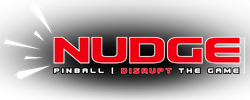Pinball, pinball machine, pinball games, game table… Several names for these machines whose purpose is to amuse players and fill the pockets of operators in public places.
If the shape of pinball, this leisure game, has hardly changed in 30 years, it was not always the case. It took several centuries for pinball, as it is called in the United States, to find its current form. And don’t think it’s going to stay that way!
Sommaire
The definition of a pinball machine
How would you define pinball in the early 21st century? Allow me to disagree with the Wikipedia definition, which seems a bit dated.
It is an object, one could say a piece of furniture, with a recreational vocation, composed of mechanical, electrical and even electronic parts. The principle is to guide metal balls on a board by means of a ball launcher and flippers.
The structure of the board is made of wood, on which are placed ramps, slides and accessories with which the player must interact by propelling the ball on or through them. The aim of the game is twofold and will depend both on the age of the machine and the context of use:
- Make as many points as possible to put your name (or initials) on the high score board, and get extra free games
- Complete missions and challenges to advance in a scenario specific to each game and consistent with the theme of the machine
The game instructions are shown on a screen placed in the front of the pinballs from the second half of the 1980s. Light effects on the playfield guide the player through the action.
The origins of pinball
Pinball has French origins, as it was inspired by the game of bagatelle, a derivative of billiards. This board with fixed wooden pins was presented in 1777 to Louis XVI during a party in his honor at the castle of… Bagatelle! Hence the name of the game.
French soldiers who took part in the Revolutionary War introduced the game to their American brothers in arms. From there, the practice spread throughout the United States. Pins replaced skittles and are the root of the word “pinball”, the English translation of pinball.

In the 1930s, the first coin-operated machines appear and they became electrified. In 1947, flippers are born, turning pinball from a gambling game to a game of skill. In the late 1970s, pinball machines were equipped with computer components and digital screens. From this point on, pinball looks like what you’ll see today.
That’s a brief summary of the history of pinball.
The different parts or components of a pinball machine
The body
The box represents the body of the pinball machine, in which we find :
- the playfield
- all the associated electromechanical parts
- the glass that protects the board from external aggression and, conversely, from players and spectators from unwanted ball throws
- the coin box
- the bass speaker and the sound card if the game has one
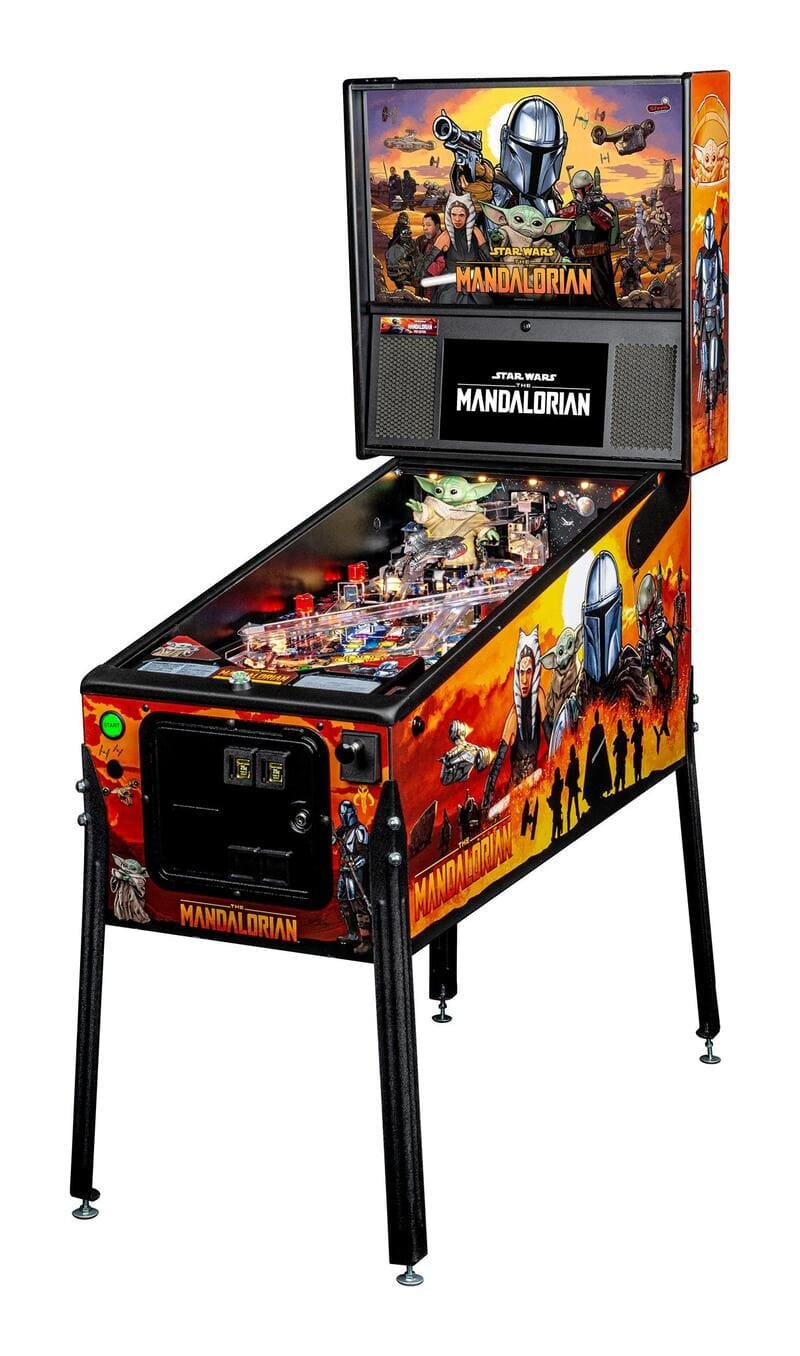
The box is illustrated with images related to the pinball theme, usually by means of “decals”, large stickers.
On the front side, there are usually slots for the coin slot, the “start” button to start a game and the ball launcher.
The two buttons to operate the flippers are on each side. Some models have more than one button but this is rare.
The front panel
The front panel is the first part of the pinball machine to be noticed when approaching it. The visual that it displays represents an important issue when the machine must attract the player, when it is competing with other games as in an arcade for example. The image is most often printed on a glass (backglass) or on a sheet protected by glass (translite).

The front panel includes the screen and the speakers panels. Inside is the electronic part, which has decreased in size over time. Nowadays, when you open the front panel of a recent pinball machine, it often looks very empty, whereas it was filled with computer components until the 1990s.
The ball launcher
Ball launcher, ball shooter, shooter rod… It is a rod with a spring that propels the ball through a channel, usually to the top of the board. The shot can be controlled by the player, a game mechanic sometimes necessary to make a skill shot, a mini-mission at the beginning of the game.
The shooter is sometimes replaced by a simple button, in which case forget about dosing the initial shot.
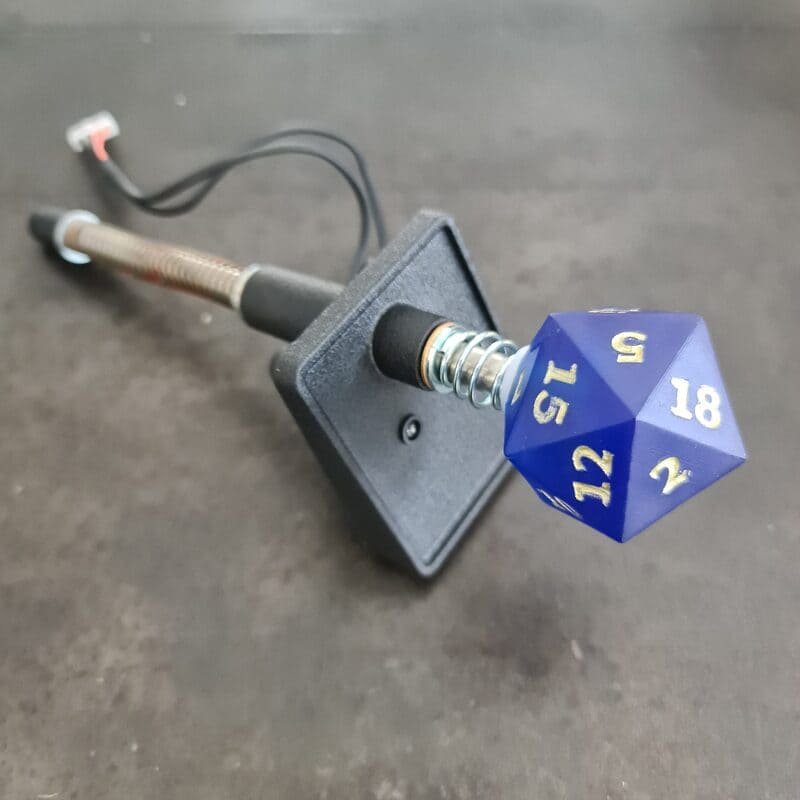
The legs
An electric pool table has 4 legs, attached to the body. They are usually made of metal and are common to all models, although colored ones are sometimes found on high-end models.
The pinball playfield and its main elements
A playfield is often rich in detail, both in terms of the visual on the wooden board and the number of interactive accessories it contains.
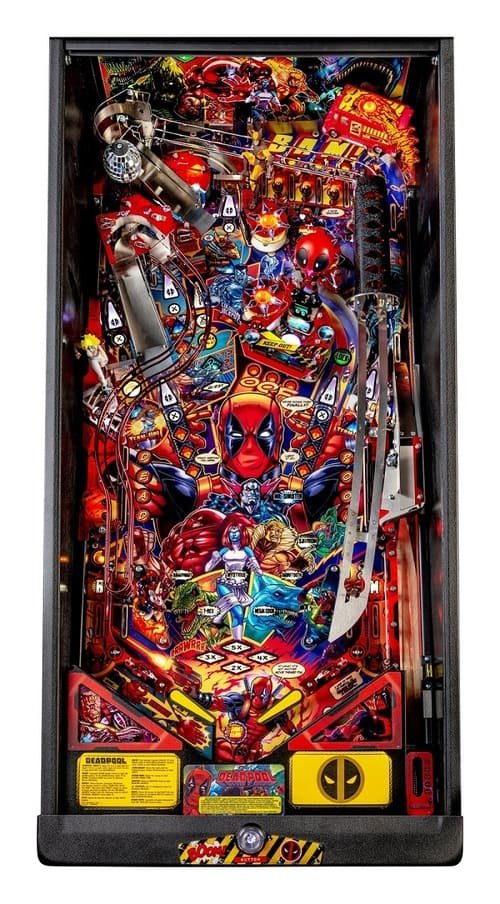
The flippers
While flippers are an integral part of the pinball image, this was not always the case. Prior to the 1940s, the only interaction with the ball available to the player was the ball launcher. The game was very random, so much so that it was considered a gambling game and therefore banned in some American states.
There are usually two flippers at the bottom of the board. However, many versions of pinball have a third, and sometimes more, on the top half of the playfield. Depending on the table, all the flippers are the same size or, conversely, vary in size depending on their position on the table.
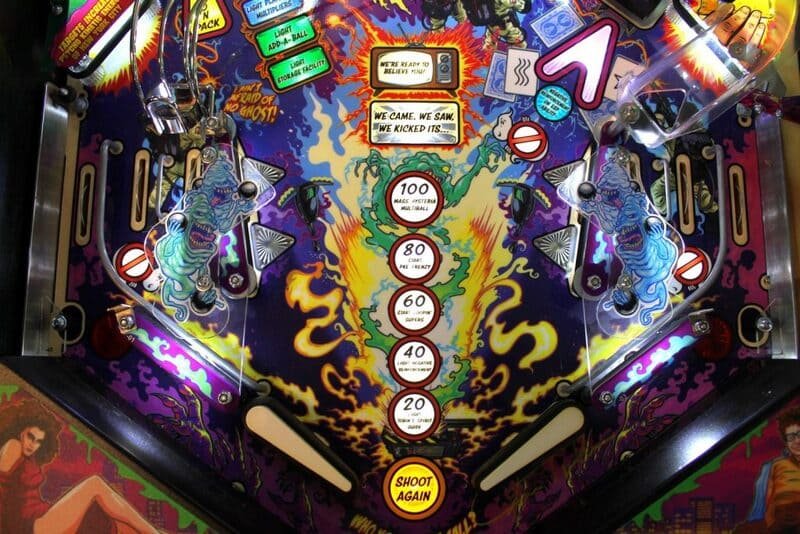
The ramps
They overhang the playfield and make the ball cross it, generally to make it arrive close to the flippers. Ramps appeared at the end of the 70’s, before that the balls did not leave the board because of technical constraints. Their presence, their number and their forms make them distinctive elements of each model.
Most often, the ramps are made of metal (good!) or plastic (less good, less elegant but sometimes the theme lends itself to it).
The loops
The loops are trajectories formed by slides on the board. They are flat, but not uninteresting. They can surprise, offer unexpected accelerations to the ball. They are the quintessence of pinball, since they were among the first elements of the first playfields, before the appearance of ramps.
The targets
The targets react when the ball hits them. There are two main variations: standup targets and drop targets that offer more possibilities, such as blocking the ball at the back of the target when it collapses and then rises again before gravity causes the ball to fall back down.
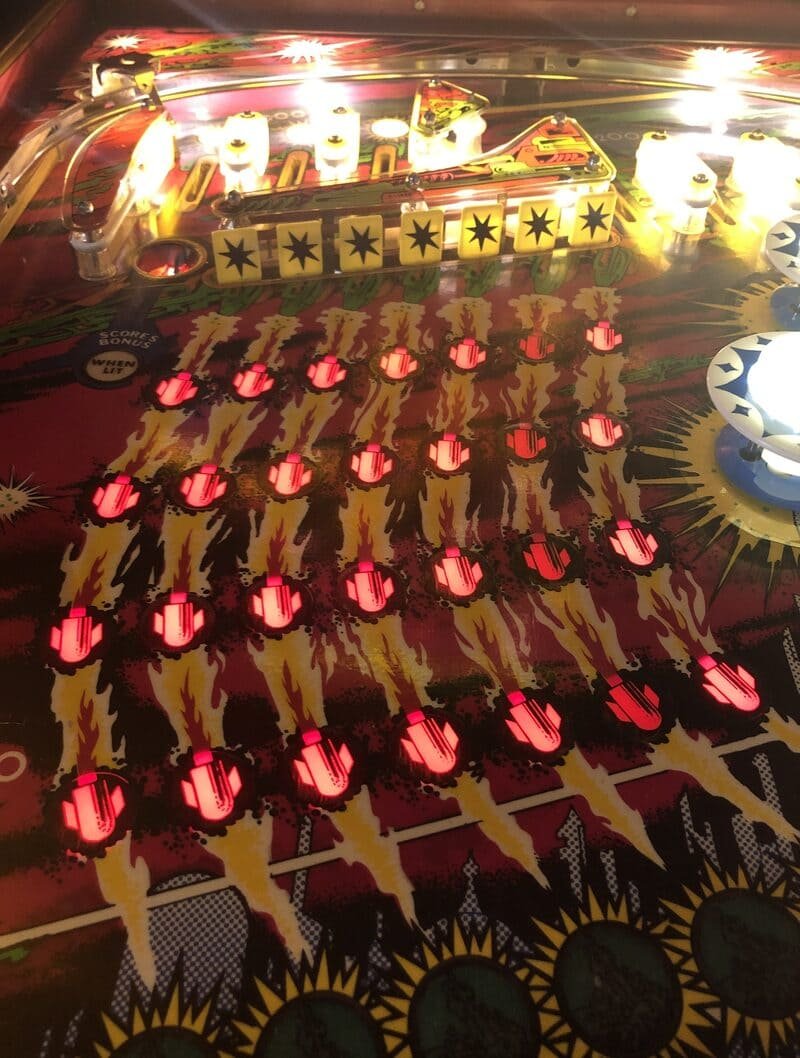
The slingshots
Generally positioned above the main flippers, these triangles surrounded by a rubber band send the ball back in a rather angry way, generating brutal variations of rhythm and chaotic trajectories.

The bumpers
A bumper is a mechanical element in the shape of a mushroom, which sends the ball back when it touches it. Often, pinball designers place them in triangles, so that the ball bounces frantically between them. However, there are many variations on their placement and number.

The Spinners
A small plate, held in the middle by a metal rod, spins on itself when the ball passes under it. Reaching a certain number of spins triggers a mission or a success.
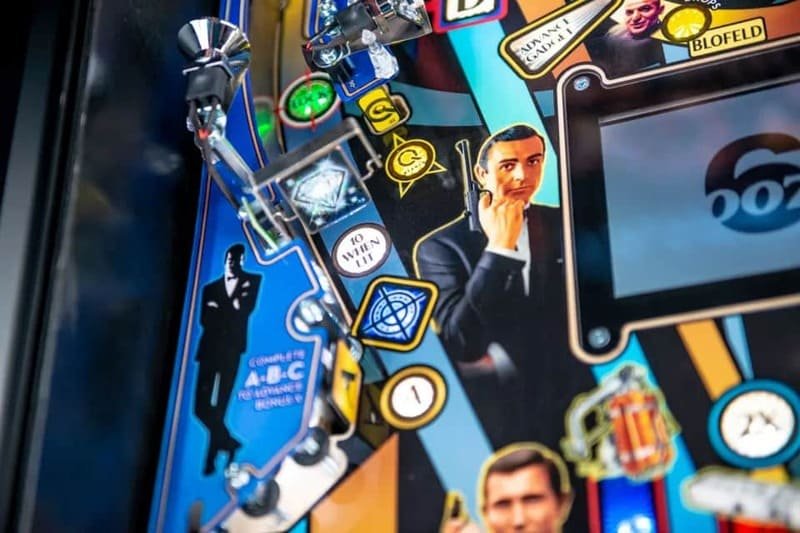
The toys
This is a generic term to define a specific element of the pinball board, original, which will not be found on another. Indeed, its shape and aesthetics reproduce an object referring to the pinball theme. The castle of the Medieval Madness game, the collapsing building of the Godzilla one…
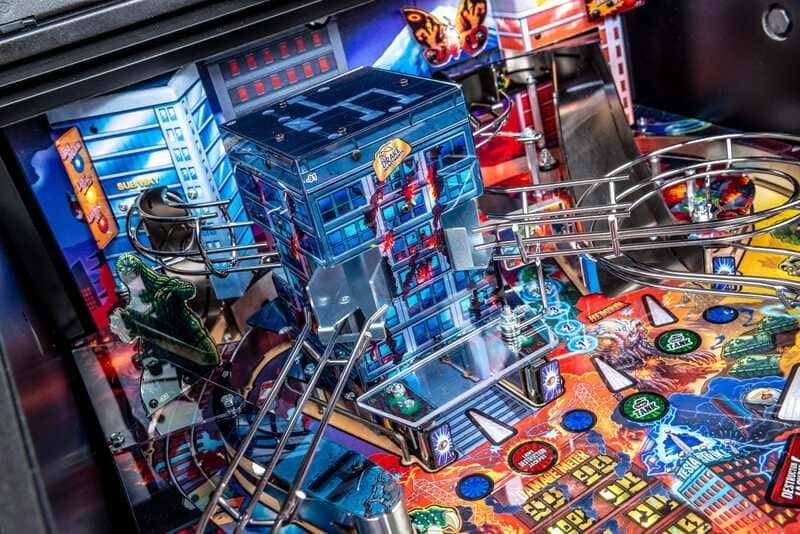
We can classify the toys according to their functions during the game:
- The toy to bash: an item to be bashed
- Ball lock: a container to store balls for a multiball
- Ball displacement: an arm or a magnet grabs the marble and puts it somewhere else
- The transmission of information through a screen, a counter, a light signal
This classification is not intended to be exhaustive.
There are also other less frequent interactive elements, such as captive balls or magna saves, but it would be impossible to mention them all.
Pinball in operation
From its invention in the early 20th century until the late 1990s, pinball was most often played in public places: bars, arcades, bowling alleys… Games are paid for, and revenues are shared between the owner of the place and the operator of the machine. An operator owns the machine, installs it, maintains it and changes or rotates it between several locations.
To pay, the player inserts a coin into the machine’s coin slot. The coin slot has been present on the machines for so long that even in strictly private use, it remains present. On the back of its door, it now houses the machine’s parameter buttons (sound volume, technical diagnosis, statistics, game price…).
In the early 2020s, the first contactless payment terminals appeared. It remains to be seen whether this new functionality will completely replace traditional coin-operated machines.
Pinball at home
Since the 2000s and the collapse of arcade games in favor of home consoles, pinball machines have found a second life at home, even if the “operating” machines have not completely disappeared.
The operators who survived then become distributors and sell new pinball machines to individuals. They also buy back, overhaul and renovate older, second-hand pinball machines.
Since the 2010s, the home market has experienced a remarkable boom, leading to a significant increase in game prices.
The evolution of pinball
Even if the general shape of a pinball machine has not really evolved for several decades, the functionalities of a pinball machine have followed the evolution of digital technology, albeit with a lag of several years. Computer components have modernized, opening the door to new features.
From reels to LCD screens
The first pinball machines displayed scores with mechanical reels. Later on, digital and alphanumeric screens were introduced. In the 1990s, Dot Matrix Displays (screens with large orange dots) took over.
Since the 2010s, pinballs have massively adopted digital screens, which allow to display videos or 3D animations. A big plus, when it comes to a music or movie license.
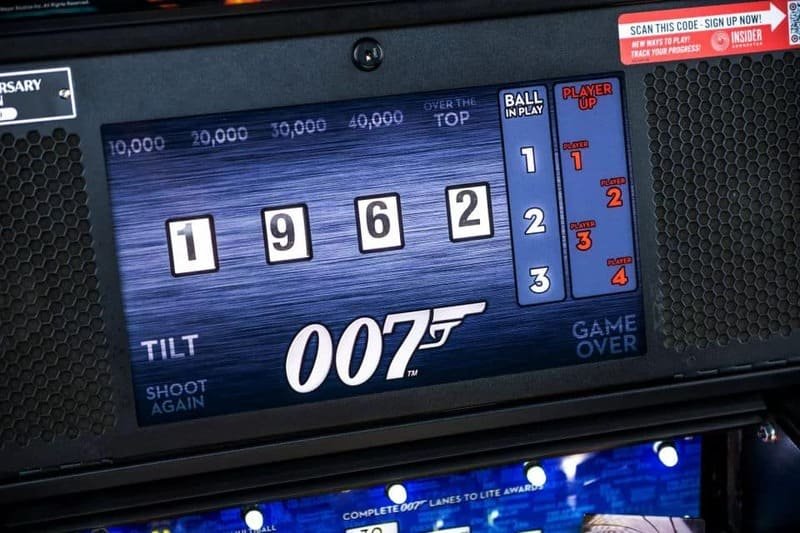

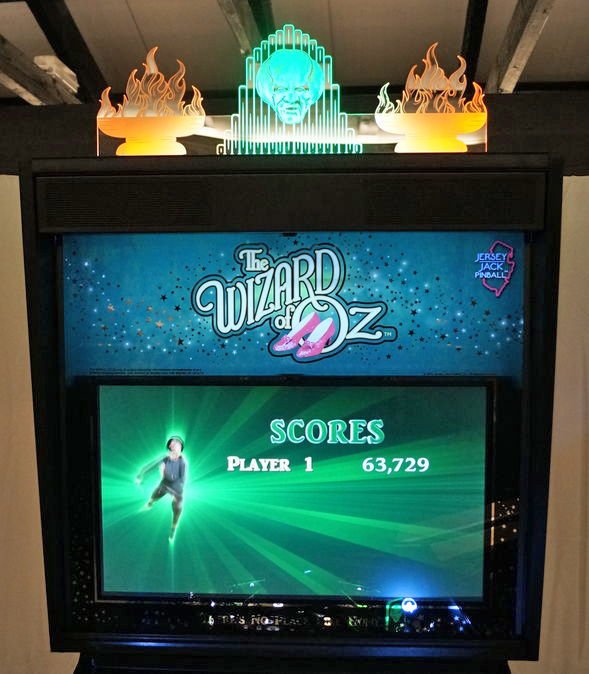
Connectivity
Starting in the 2020s, pinball machines started to connect to the Internet, in order to share scores, facilitate competitions and update the code (the rules)… And you can expect additional content: new missions, new scenarios, new animations…
The market leader Stern Pinball has extended these online features to all its productions, through its Stern Insider Connected module.
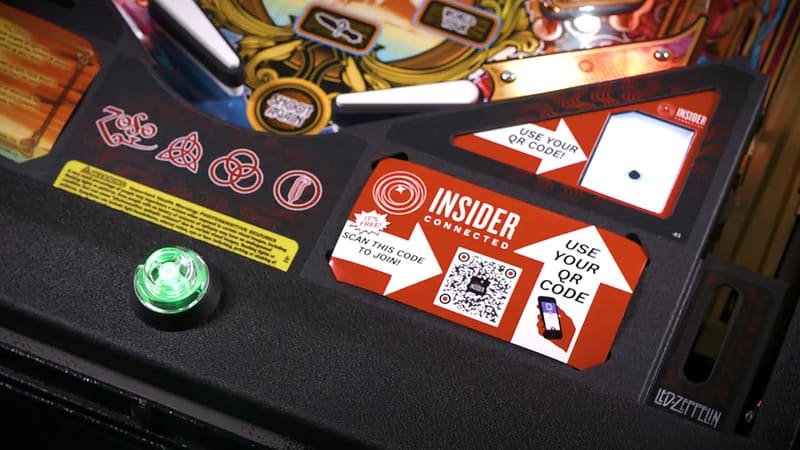
The future of pinball
What will pinball games look like in 20 or 30 years? The fact that part of the game will be linked to an online mode seems like a given. But it is also credible that the physical side of the machine will remain, as it is a source of emotions and indispensable for collectors.
The pinball machine as we know it is not likely to disappear, but substitutes will most likely multiply, under the combined pressure of high demand and increasingly unaffordable prices:
- Virtual pinball machines (also called vpins), replace the board with a screen, but look like a traditional machine
- Virtual reality games will offer a hybrid experience, the principles of which are not yet fixed: 2 physical buttons, the rest of the game via a headset, a vpin enhanced with a headset…
There are still many pinball machines to invent!

